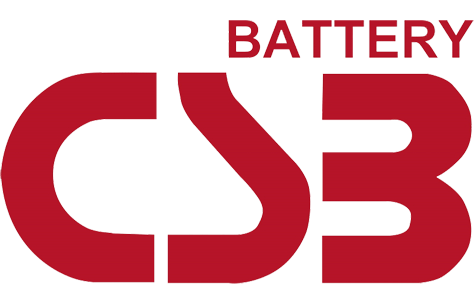Legacy UPS - Out With The Old, In With The New
When Is The Right Time To Swap Out Legacy UPS?
One of the most critical pieces of hardware in any modern business environment, the Uninterruptible Power Supply (UPS) system is at the heart of a company’s infrastructure. It conditions, monitors and filters incoming utility power and when the power is lost, supports the load with internal and/or external batteries to ensure critical loads are protected and backed up 24 hours a day, 7 days a week, 365 days a year.
The question of when to replace an existing UPS system is one that is often asked. Generally, the subject is raised following the failure or repeated failures of an existing system, which has resulted in unplanned and unwanted downtime. The escalating costs of annual service agreements or poor results from energy efficiency audits are also common triggers, so at what point does replacing legacy equipment rather than repairing it or allowing it to ‘run-to-fail’ make the most commercial sense?
It is important to understand that while some older systems may currently be in ‘perfect’ working condition within a variety of different operational environments, the reality is that all electro-mechanical systems have components that eventually deteriorate. The need for occasional repairs and battery replacements can be expected but ensuring an existing UPS solution is able to meet its performance standards is imperative. Understanding the recommended timescales for replacing legacy equipment therefore is crucial.
On average, the hardware of a UPS is designed to last for approximately six years so a business would typically be looking to swap out a legacy backup power system every five to 10 years, depending on the situational environment of where the UPS solution is housed and the care/maintenance program in place to care for it and its internal mechanisms such as capacitors. UPS components require regular servicing and will require replacement during the lifespan of the UPS system itself.
But what is this recommendation based on and why is it preferable to swap out existing equipment rather than sticking with the ‘cheaper’ option of repairing it or allowing it to ‘run-to-fail’? The following points examine factors that influence this recommended timescale, whilst also discussing a few other elements that should be taken into consideration:
-
Age of the UPS / End of Life
A UPS system is a sensitive piece of technology that contains batteries, capacitors, circuit boards and other components that are sensitive to heat and environmental conditions such as moisture, dust and debris as well as disruptions from load transients and power outages.
Each component has an individual lifespan which attributes to the overall lifespan of the UPS.
All systems have an anticipated ‘End of Life’ (EOL) date advised by the manufacturer, where the failure rate increases due to ‘wear out’ of the varying electrical, electronic, electrochemical and mechanical components. Failure modes are based on the duration of operation and operating conditions of the surrounding area as outlined above.
-
Replacement Parts
The age of an existing UPS system will play a major role in the price of the service agreement, the cost of replacement components and the availability of parts – the closer the system is to its EOL date, the more expensive the cost of servicing.
Once manufacturers discontinue production of a particular model, the price of replacement parts tends to increase putting those without a service contract at risk of unexpected and expensive charges. At some stage, manufacturers will discontinue the production of new components altogether, leaving second hand parts from decommissioned units the only repair option. This lack of service support makes routine maintenance and recovery from failure impractical, if not impossible.
Should the existing UPS system be meeting load and runtime requirements an argument could be made for letting it ‘run-to-fail’ but this is an exceptionally hazardous course of action to take. There is a real risk of sudden circuit board failure at any point, resulting in the inevitable threat of unsupported loads and downtime.
-
Energy Saving Potential
Replacing legacy UPS systems can greatly increase both energy savings and efficiencies – ensuring energy usage is optimised and reducing carbon emissions to potentially save thousands of pounds in energy costs annually. A 100kVA legacy system for example, can be up to 58% less energy-efficient than a new one, which creates a compelling business case when considering energy saved versus expenditure on upgrade.
Many new UPS models offer advanced control systems that improve efficiencies by one or more methods, for example; eco mode operation (bypasses inverter) or hibernation of unloaded power modules.
-
Advancements in Technology
Advancements in UPS technology have resulted in increased efficiency and reliability. This is largely due to the addition of features such as:
- Power factor corrected rectifiers which yield reductions in demand on power supplies, system losses and carbon footprint
- Insulated-gate bipolar transistors – components that increase transient response times in dynamic load environments and ensure increased efficiency for fast switching technology
- Modular components that increase reliability through redundancy while reducing the Mean Time to Repair
Other industry sectors also benefit from technological advancements that directly impact older UPS systems. The IT industry typically refreshes its technology every two to three years to ensure it can process data at faster speeds. Legacy units can easily become outdated therefore if left in situ for in excess of 10 years as these become incapable of delivering a higher power efficiency. Newer models have a higher output factor and are typically 97% efficient online.
-
Battery Age
Battery capacity naturally reduces over time based on usage, number of cycles and atmospheric environment. In some instances the cost to replace a string of batteries can be very expensive (up to 40% of the value of a new UPS system) therefore if a solution is over five years old it may be more cost-effective to replace the entire system with one that comes with a warranty, higher efficiency and new features.
-
Future Load Requirements / Expansion
It is not uncommon for a business model to change over time. Critical loads and demand may increase through expansion leading to a risk of overload.
If a backup power system is currently loaded up to 80% it is working within the optimal zone however should the UPS unit be loaded to over 80%, there is a danger it will run out of capacity or become overloaded.
In contrast, certain technology trends have created environments where technology is being used more efficiently than ever before resulting in a reduction in load on the existing UPS system. Where a system is operating at less than 50% load it is worth considering replacing it for a more appropriately sized unit to ensure optimum efficiency.
-
Changes to the Backup Power System
UPS systems are rarely the sole part of a backup power plan but usually one of a larger system. Any changes to this and the UPS unit may require replacement, for example should an emergency generator be added to the system at a later date. It may be that a longer battery runtime is no longer required in which case a reduced UPS system with lower service and battery replacement costs should be installed.
Replacing an older legacy UPS solution with a new UPS system offers the lowest long term risk profile when compared to run-to-fail or upgrade options. Initial capital expenditure may be higher but this needs to be balanced against the lower operating expenses that are due to reduced power losses, lower service costs, improved efficiency etc. The reduced risk of failure, improved reliability and system resilience to protect critical data ensures the Return On Investment (ROI) is worthwhile and can legitimately be included as part of any ROI calculations.
Secure Power has been providing critical power solutions for over a decade and has an industry wide reputation for delivering first class backup power services. With preventative maintenance at the core of its business, Secure Power has its own team of engineers, available nationwide, 24/7. The company offers a wide range of UPS solutions including hire, installation, commissioning, immediate response and ongoing maintenance and service works alongside UPS battery testing, removal and relocation. For more information about Secure Power’s extensive range of UPS systems and power protection services please get in touch with a member of our team on 0800-080-3118














